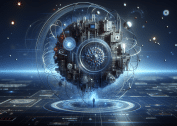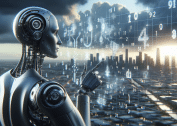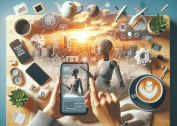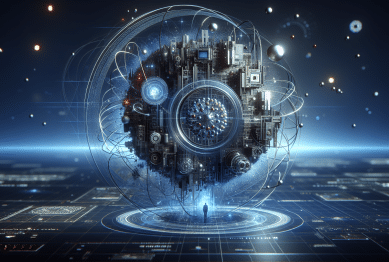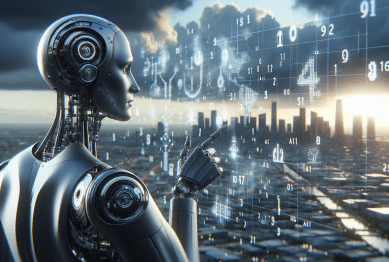Explore how artificial intelligence is quietly changing the world around you, from daily routines to cutting-edge discoveries. This article uncovers the practical impact of AI technologies and what their evolution could mean for your future in a rapidly digitizing society.
Understanding the Basics of Artificial Intelligence
Artificial intelligence (AI) has become a widely discussed topic in contemporary technology circles and is increasingly present in routine activities. It refers to computer systems or software that can mimic processes typically associated with human intelligence, such as learning, reasoning, and problem-solving. AI includes subsets like machine learning, which enables systems to improve through data exposure, and deep learning, which uses neural networks to analyze patterns. As new algorithms surface, the boundaries between traditional software and intelligent systems continue to blur. The adoption of AI, including speech recognition, image analysis, and language translation, has woven itself into tools people rely on daily.
Many individuals use AI without realizing it. Popular examples are personal assistants, such as those built into mobile devices, and recommendation engines on streaming platforms. These applications showcase how artificial intelligence personalizes experiences and simplifies complex decisions with data-driven precision. Even behind the scenes in fields like logistics or urban planning, complex algorithms work tirelessly to optimize delivery routes, energy usage, and more. Businesses increasingly depend on technology to not only speed up operations but also to uncover actionable insights buried deep in large datasets.
As the definition of artificial intelligence expands, so do its possibilities in a modern, connected world. AI’s evolution has made it more accessible, meaning that organizations of any size can leverage its power. Schools explore AI-driven learning experiences, while hospitals use predictive analytics to anticipate patient needs. The discussion now centers on making AI ethical, explainable, and reliable, so that it enhances human life while minimizing unintentional bias or harm. Learning about the underlying mechanisms can help everyone understand how AI shapes the new digital landscape.
Your Daily Life: Quiet Transformations from AI
Artificial intelligence is not just found in futuristic labs or science fiction stories; it has a real influence on daily routines. Consider your smartphone, for instance. Most devices use AI to improve photos, block unwanted calls, transcribe messages, and predict words as you type. Navigation applications integrate machine learning and real-time data to recommend the fastest routes and predict traffic jams before they happen. Behind every convenient feature, an intelligent algorithm works to anticipate and fulfill user needs seamlessly.
Voice-powered technologies are another subtle example. Smart speakers allow users to play music, adjust home lighting, or check the weather, interacting through natural language processing. Recommendation engines on shopping and video platforms analyze previous activity and offer suggestions tailored to each profile. The extent of personalization is enabled by collected data—personal habits and preferences feed into constantly learning algorithms. This delivers more relevant search results or entertainment options, but also raises questions about privacy and data security.
AI influences less-visible sectors, too. Financial institutions now rely on AI for fraud detection and risk analysis, flagging unusual activities and automating responses. In retail, predictive analytics forecast inventory demands to avoid shortages or overstock situations. Transportation systems, including ride-sharing and public transit, use intelligent software to optimize scheduling and routes. AI in the background delivers convenience, cost savings, and improved safety, making a tangible difference even when not immediately obvious.
Revolutionizing Science and Research
The impact of artificial intelligence in scientific research is profound. In medicine, AI accelerates drug discovery, enables early disease detection, and personalizes treatment plans by analyzing vast quantities of clinical data. Radiologists now use image recognition software to flag abnormalities quicker than traditional methods. Genomic research, too, has been transformed—AI processes sequences and identifies disease risk more efficiently, expediting research that once took years. Even the fight against climate change is enhanced as AI models simulate environmental outcomes to guide policy and innovation.
Physics and astronomy have also benefited from AI’s computational might. Machine learning algorithms sift through terabytes of astronomical data, picking out new planets or mapping dark matter more accurately than before. In environmental science, researchers use neural networks to predict natural disasters or track deforestation patterns in real time, enabling proactive interventions. Collaboration between AI and traditional scientific disciplines results in discoveries at a pace previously unimaginable, greatly expanding the frontiers of knowledge.
Despite the speed and sophistication artificial intelligence brings, there are concerns about ensuring accuracy and avoiding bias in scientific conclusions. Researchers emphasize transparency and reproducibility, sharing algorithms and data openly for verification. This ethos moves AI forward not as a black box, but as a transparent, collaborative tool. Upholding scientific integrity in the era of AI means combining computational power with thoughtful oversight, ensuring that discoveries benefit society responsibly and inclusively.
Jobs, Automation, and the Changing Workplace
Workplaces worldwide are feeling the ripple effects of automation and AI-driven processes. Many industries have introduced robots or intelligent software to handle repetitive, hazardous, or highly specialized tasks, reducing risk for human workers. Manufacturing, for example, employs machine learning to monitor assembly lines for defects, allowing predictive maintenance before costly breakdowns occur. Meanwhile, customer service uses chatbots powered by natural language processing, handling basic queries and freeing employees to focus on complex solutions.
AI also leads to the creation of entirely new job categories. Data scientists, AI ethicists, and machine learning engineers are roles that have come into prominence over the past decade, responding to the need for more sophisticated oversight and guidance of algorithms. For individuals looking to future-proof their careers, learning basic data skills or understanding automation’s principles can provide a valuable edge. Lifelong learning and digital literacy are quickly becoming prerequisites for career growth in any sector influenced by tangible AI advancements.
Though concerns about job displacement persist, the reality is nuanced. Automation often augments human abilities rather than fully replacing them. AI systems can take over repetitive analysis, while employees interpret results or make strategic decisions based on new insights. This human-in-the-loop approach—where people and machines collaborate—ensures optimal outcomes. Embracing AI training and upskilling allows organizations and workers alike to adapt to an evolving job landscape while maximizing the full potential of these technologies.
Challenges and Ethics in AI Development
With rapid expansion of artificial intelligence, complex ethical dilemmas are also emerging. One of the most discussed is bias—if the data fed into AI contains unintentional prejudices, the technology can amplify them. This has raised concerns in fields like hiring, lending, or law enforcement. Ensuring that AI decision-making is transparent, fair, and accountable has become a driving conversation among researchers, policymakers, and end-users. Establishing ethical guidelines is crucial for building trust and widespread acceptance of AI in society.
Data privacy remains another major issue. Consumer information powers AI’s ability to deliver personalized experiences, yet this reliance on data also exposes vulnerabilities. Consumers and advocacy groups pressure companies to treat data with respect—minimizing unnecessary collection, following regulations, and using encryption tools. As global data protection standards evolve, AI systems must be designed to comply with regional requirements while still offering innovation and value. Striking the right balance between utility and privacy is a challenge facing every organization leveraging technology.
Ongoing research addresses these challenges by emphasizing explainable AI and regular audits of machine learning models. Developers work to make algorithmic decisions more interpretable, helping users understand why a particular outcome occurred. Third-party oversight and collaboration among diverse stakeholders create checks and balances. Promoting open-source AI tools and public education initiatives ensures that technological advancements remain transparent and under human control. Ethical innovation will define the future relationship between people and intelligent machines.
Looking Ahead: The New Frontier of AI
Emerging trends in artificial intelligence promise to reshape not just work or leisure, but the very nature of living in a digital society. Technologies such as edge computing allow AI processing to happen on local devices, protecting data privacy while enabling faster decisions. Quantum computing stands poised to expand AI’s capabilities further, breaking through current processing barriers. As interdisciplinary teams tackle challenges jointly, new discoveries in AI could ignite unknown areas of science and creative expression.
Policymakers and research leaders now focus on how to govern the influence of artificial intelligence responsibly. International collaboration, transparent research funding, and prioritizing equity are frequent topics in global summits. Intelligent machines could help address grand challenges like disease eradication, sustainable energy, and accessible education for all—if deployed thoughtfully. Any transformative drive must be matched with consideration of human well-being, avoiding overreliance on automation at the expense of authentic connection and agency.
For the average person, staying updated with artificial intelligence trends and understanding their implications will be essential. Public understanding shapes adoption rates, regulatory structures, and the ultimate direction of future technologies. By participating in dialogues about AI, supporting responsible use, and investing in ongoing education—consumers and innovators alike can influence an intelligent future that benefits beyond individual convenience to the greater good. The story of AI is still being written, inviting new voices every step of the way.
References
1. European Commission. (2023). Artificial Intelligence. Retrieved from https://digital-strategy.ec.europa.eu/en/policies/artificial-intelligence
2. National Science Foundation. (2022). Harnessing the Data Revolution. Retrieved from https://www.nsf.gov/news/special_reports/big_data/
3. IBM. (2023). What is Artificial Intelligence (AI)? Retrieved from https://www.ibm.com/topics/artificial-intelligence
4. Stanford University. (2023). Artificial Intelligence Index Report. Retrieved from https://aiindex.stanford.edu/report/
5. U.S. Department of Energy. (2023). Artificial Intelligence and Machine Learning at DOE. Retrieved from https://www.energy.gov/artificial-intelligence
6. World Economic Forum. (2023). What is Responsible AI? Retrieved from https://www.weforum.org/agenda/2023/06/what-is-responsible-ai/



